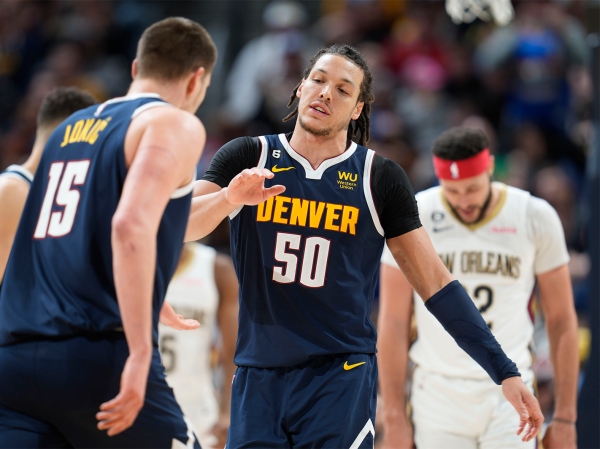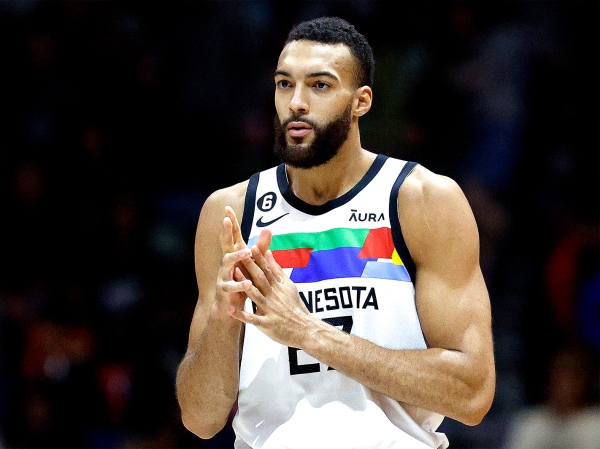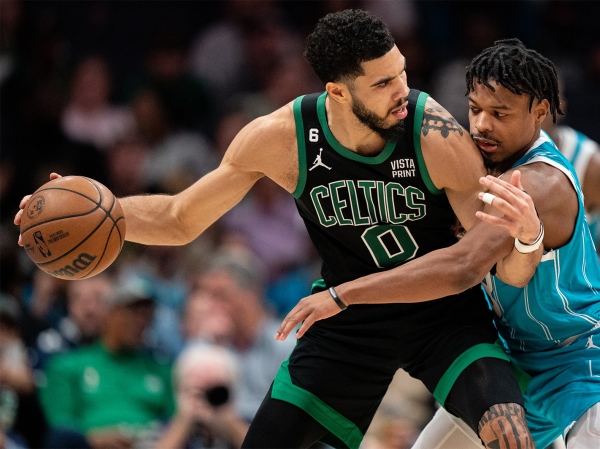The Sacramento Kings' Offense Is Playoff-Worthy
But can the team end the longest postseason drought in NBA history?

TIM NWACHUKWU / GETTY IMAGES
After a come-from-behind victory over the Toronto Raptors on Wednesday night, the Sacramento Kings — yes, the Kings — have a 15-12 record, tied for the 11th-best mark in the NBA. Sacramento’s record is backed up by its point differential, and there are even indications that its performance to date has been better than 11th-best: The Kings have the league’s eighth-best scoring margin when adjusting for pace and for opponent strength.
It wouldn’t normally be all that notable when a team looks pretty good about a quarter of the way through the NBA season, but the Kings currently own not just the league’s longest active playoff drought (16 seasons), but also the longest drought in NBA history. So, any sign that the streak might be coming to an end is worth investigating.
To that end, our RAPTOR-based prediction model now gives the Kings a 49 percent chance of making the playoffs.1 That’s up from 13 percent in the preseason model, and the 36 percentage point jump is the largest for any team so far this season. Sacramento’s projected record of 42-40 is 11 wins better than its preseason projection, and its plus-0.5 projected per-game point differential is up 4.1 points. Both of those figures are also the most-improved in the league to date.
The Kings have gotten here largely on the strength of their offense, which ranks sixth in the NBA in points per 100 possessions. Said offense has been powered by star-level performances from De’Aaron Fox and Domantas Sabonis, who this year — finally, at long last — are surrounded by a wave of 3-point snipers.
As we noted in our free-agency round-up this summer:
The Sacramento Kings went out and got two sharpshooters to supplement their De’Aaron Fox-Domantas Sabonis combination. One is Malik Monk, who used a strong contract run with the Lakers to secure himself a two-year deal and reunite with Fox, his former college teammate at Kentucky. Monk emerged as a good small-man pick-and-roll screener last season alongside LeBron James, and while the Kings don’t have anybody like LeBron (duh), Sacramento should be able to leverage Monk’s shooting to provide driving space for Fox and to make sweet dribble-hand-off music with Sabonis. The other is former Hawk Kevin Huerter, who figures to slide into the starting lineup and play a similar role to the one he had in Atlanta.
That’s indeed how things have played out for those two players (more on them in a minute), but it’s notable that they’re not alone in letting it fly from the outside. Fox arrived in Sacramento in 2017, and prior to this year, the Kings never had more than two players attempt at least six threes per 36 minutes in a season during his tenure.2 So far this season, they have six such players — including Fox himself — and that sextet has connected on a combined 37.1 percent of its attempts from beyond the arc. (This is despite Monk shooting only 35 percent after a recent cold stretch, compared with his 40.1 and 39.1 percent marks in each of the past two seasons.)
The De’Aaron Fox-era Kings have never had so many shooters
Sacramento Kings players with 6.0 or more 3-point attempts per 36 minutes in a season since 2017-18
| Season | Player | 3PA/36 | 3P% |
|---|---|---|---|
| 2022-23 | Kevin Huerter | 7.9 | 41.0% |
| 2022-23 | Terence Davis | 10.5 | 38.5 |
| 2022-23 | De’Aaron Fox | 6.0 | 36.2 |
| 2022-23 | Keegan Murray | 7.5 | 35.8 |
| 2022-23 | Malik Monk | 9.3 | 35.0 |
| 2022-23 | Trey Lyles | 8.4 | 33.8 |
| 2021-22 | Buddy Hield | 11.3 | 36.8 |
| 2020-21 | Tyrese Haliburton | 6.1 | 40.9 |
| 2020-21 | Buddy Hield | 10.7 | 39.1 |
| 2019-20 | Buddy Hield | 11.2 | 39.4 |
| 2019-20 | Bogdan Bogdanović | 9.0 | 37.2 |
| 2018-19 | Buddy Hield | 9.0 | 42.7 |
| 2018-19 | Bogdan Bogdanović | 6.9 | 36.0 |
| 2017-18 | Buddy Hield | 7.3 | 43.1 |
Having the extra space to operate in has made Fox a more effective driver. Among the 51 players averaging at least 10 forays per game, according to NBA Advanced Stats, Fox ranks seventh in field-goal percentage off of drives (57.2 percent). That’s a career-best mark, and up more than 5 percentage points from last season. And Fox hasn’t just been shooting more effectively; he’s also making better shoot-pass decisions when he gets into or near the paint.
Speedy guards tend to reach a point in their careers where they realize they don’t have to go full-bore all the time, and are better off modulating to keep defenders off balance. To say Fox first reached that point this season would be false; he’s been adjusting his speed for years now. But he appears to have better control of the speedometer than ever before, as well as a better handle on when to put the pedal to the metal and when to ease off a bit.
The Kings play at the NBA’s fifth-fastest pace, but according to Second Spectrum, no team in the league has gotten the ball over the half-court line faster on an average possession (3.75 seconds), which in turn has meant that no team in the league has seen opposing defenses pick up their lead ball handler closer to the rim (35 feet, nearly 3½ feet closer than the league average). The closer you are to the basket, the easier it is to score — or at least to threaten an easy score, draw help and then spray the ball to one of the aforementioned shooters dotting the perimeter.
On half-court possessions, the Kings also have the benefit of being able to throw the ball down to Sabonis on the block, where he is absolutely bulldozing opponents. During the player-tracking era (which began with the 2013-14 season), there have been 592 instances of a player posting up at least 100 times in a given campaign. Among that group, Sabonis’ post-ups this season have yielded the fourth-most points per possession (1.355).
Monk told The Ringer’s Michael Pina that Sabonis, “actually looks to pass first, more than normal,” when in the post. “More than he should, sometimes. That’s what makes him so hard to guard.” Not that it should be surprising, but Monk is dead on when analyzing his teammate’s post-up tendencies. Among the same group of 592 players, Sabonis’s rate of 0.373 passes per direct post-up3 ranks 32nd, just outside the top 5 percent.
Sabonis told Pina that the team’s efforts to surround him and Fox with shooting have made life easier in the post. “If they double-team me, it’s easier for me to kick out and [they] knock it down. Then they’re [also] more worried to double.” Sacramento has scored a ridiculous 1.418 points per possession when Sabonis passes out of the post, a rate that ranks 14th out of the 360 instances in the past decade where a player has thrown at least 50 post-up passes.
Sabonis also operates as a dribble hand-off hub for Sacramento, which gets more out of that action than any team in the NBA. The Kings have scored 877 points out of hand-offs this season, per Second Spectrum, 248 more than the next-closest team. The distance between them and the second-place Utah Jazz is greater than the distance between the Jazz and the 25th-place Boston Celtics. It helps that Sacramento has three high-level options with whom Sabonis can pair on those plays: Huerter leads the league in points off dribble hand-offs, while Monk is second and Fox is 24th. Those duos rank first (Sabonis-Huerter), third (Sabonis-Monk) and fifth (Sabonis-Fox) in points generated out of their hand-off plays.
Whether designed or freelanced, Sabonis has excellent feel for how to navigate these actions, and his partners are able to take advantage of the space he creates for them with the screens he sets while handing them the ball.
It’s a credit to new coach Mike Brown (the team’s 12th head man since its last playoff appearance) that things have flowed so seamlessly for the Kings on that end of the floor while they’ve incorporated multiple new pieces, including a rookie starter in Keegan Murray. (And that Brown has kept Harrison Barnes fully engaged despite a reduced role.) They can get away from Sabonis at times (his 19.9 percent usage rate is his lowest mark since his rookie season, when he often looked actively terrified of what Russell Westbrook would do if Sabonis took a shot), and both Fox and Monk can get a little bit trigger-happy looking for their shot. But everything seems to be geared around taking advantage of each player’s inherent strengths, and those strengths are complementary. That’s a recipe for a very good offense.
The Kings still need work in the point-prevention department, but it’s at least encouraging that they rank 17th in defensive efficiency. That’s certainly better than could have reasonably been expected coming into the season — Sacramento ranked 27th last year — and it’s notable that opponents have actually outperformed their expected shooting efficiency (based on shot location, defender location and other factors included in Second Spectrum’s algorithm) by the league’s fifth-largest margin to date, so there is room for improvement even if the Kings don’t qualitatively defend any better. Sacramento is unlikely to ever field a top-10 defense given its personnel, but if the Kings can remain around a league-average unit (or even slightly below), their suddenly dangerous offense is enough to have them in the mix for a play-in spot all year long.
Check out our latest NBA predictions.



